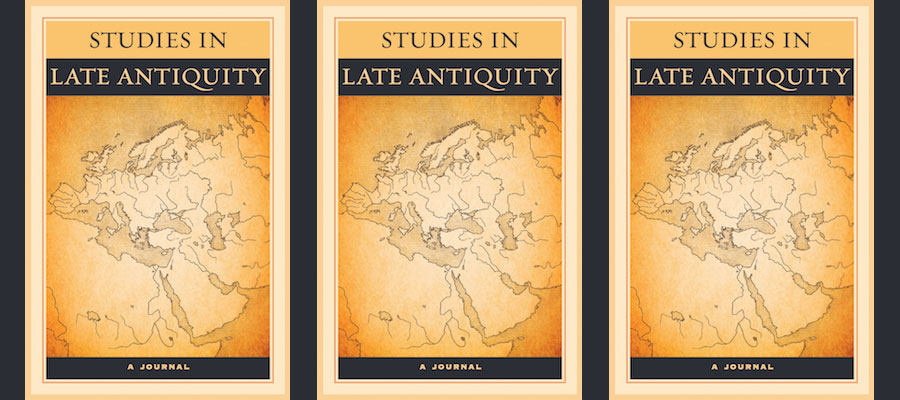Studies in Late Antiquity, volume 4, issue 4 (Winter 2020).
CONTENTS INCLUDE
Steps toward a Study of Symeon the Stylite the Younger and His Saint’s Cult
Dina Boero and Charles Kuper
A large dossier of primary sources survives for Symeon the Stylite the Younger from Late Antiquity. These sources include not only hagiographical evidence, but also archaeological remains from his cult site, homilies, and at least one letter. They offer insight into the varied voices which shaped Symeon’s identity, sanctity, and ministry in the sixth and early seventh centuries CE. The state of scholarship on these sources is uneven, however, with the result that scholars have primarily studied the saint and his cult through the lens of the hagiographic material, the Life of Symeon Stylites the Younger in particular. In order to lay the foundation for a full inquiry into the saint and his cult, this article disentangles the dossier of evidence on Symeon in Late Antiquity. It introduces each source in chronological order; provides an overview of authorship, date, and the state of scholarship for each source; and makes preliminary recommendations for paths forward. It is meant to be a guide for art historians and archaeologists unfamiliar with the sizeable literary corpus, textual scholars who do not often work with material sources, and, for both groups, an introduction to problems in the dossier. It encourages scholars to treat each source on its own terms and re-evaluate the rich interconnections between the textual and archaeological evidence.
Byzantine Monasticism on the Black Mountain West of Antioch in the 10th-11th Centuries
Joe Glynias
This article sheds light on a hitherto unexplored phenomenon that alters our picture of Byzantine monasticism: the monastic culture of the Black Mountain outside Antioch. From 969-1084, the Black Mountain thrived as a destination for a variety of Chalcedonian monks: Greek-speaking Romans, Arabic-speaking Melkites, Georgians, and Armenians. I illustrate the prosperity of monastic life on the Black Mountain, the scholarly activity flourishing in and between languages, and the networks connecting the mountain to monasteries inside and outside of Byzantium.
In this paper, I examine three bodies of source material: manuscripts produced at the Black Mountain, texts produced by its scholars, and the letters of Nikon of the Black Mountain. Colophons in Greek, Arabic, Syriac, and Georgian manuscripts display the active scribal culture of these monasteries. Scholars centered at St. Symeon produced scores of translations from Greek into Arabic and Georgian that illustrate the lasting impact of this multilingual intellectual atmosphere. Nikon’s letters provide the basis for a cultural history of Antiochene monasticism. From these and other sources, I show that the Black Mountain was a major hub in middle Byzantine monastic networks. At the same time when Athos was assuming a primary role in the western Orthodox monastic world, the Black Mountain was performing a similar function in the east.
Alexander’s Comrades in the Chronicle of John Malalas
Benjamin Garstad
As a rule in the historical tradition, over time the larger cast of characters behind a series of events, the king and his court, is distilled down to the person of a single actor, the king, while his ministers and lieutenants are consigned to oblivion. Alexander the Great is by and large an exception to this rule. His Companions play important roles in his reign and campaigns, his character is developed to a great extent in his relations with them, and they rise to prominence in their own right as his successors; they form an indispensable part of the memory of Alexander. This is certainly true of the account of Alexander in the Chronographia of John Malalas, the seminal work of the Byzantine chronicle tradition. The men surrounding Alexander are referred to repeatedly, in marked contrast to the other historical personages who feature in the Chronographia. The terms that Malalas uses of Alexander’s Companions, however, are unusual, and require some interpretation. And the prominence of his Companions in this narrative seems intended to contribute to an essentially, but subtly negative depiction of Alexander by recalling the most disreputable incidents in Alexander’s career, which usually involved his Companions.
